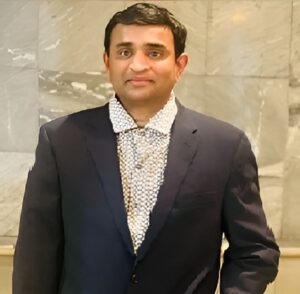Bringing A Filmmaker’s Storytelling Mindset To Tech Marketing
By: Elena Mart
In the world of corporate technology, marketing has long been driven by straightforward product specifications and capabilities. But as younger audiences increasingly crave more immersive, emotionally resonant content, a new creative force is emerging – filmmakers bent on injecting their narrative talents into brand storytelling.
Meet Kayo, an up-and-coming producer and creative director who is upending conventions by cross-pollinating her cinematic storytelling mindset into the way major tech brands engage audiences. While her contemporaries default to dry, jargon-heavy ad campaigns, Kayo channels her independent filmmaking roots to craft atmospheric, character-driven stories spotlighting the diverse human voices powering each new disruptive innovation.
“As a filmmaker, uncovering raw personal truths and building emotional connections is instinctive,” Kayo notes. “Yet so much corporate marketing felt devoid of the fundamental experiences and perspectives catalyzing new technologies.”
Armed with an avant-garde visual sense and knack for provocative conceptual narratives, Kayo has led novel methodologies for infusing product tales at elite brands like Microsoft, Adobe, and Chase with philosophical depth and human nuance. As the executive producer of two award-winning sci-fi shorts, she ventures into themes of virtual reality and AI sentience, bringing a depth of storytelling to tech narratives that resonate with universal human experiences.
Rather than generic unveilings, her envisioned stories construct intimate, atmospheric vignettes spotlighting the struggles, ambitions, and philosophical perspectives of the visionary developers, designers, and entrepreneurs behind each new platform. Burnout-battling coders, entrepreneurs grappling with existential uncertainties, ethics researchers weighing societal impacts – all are portrayed with unexpected emotional authenticity woven into compelling, allegory-rich narratives.
Mundane settings mutate into dreamlike realms – busy coding sessions reframed as feats of sacred digital alchemy, uninspiring hardware components transmuted into symbolic iconography across impressionistic sequences. Kayo’s visual metaphors posit that paradigm-shifting innovations emerge not from sterile corporate behemoths but from the fundamental human experiences of ambition, resilience, and the perpetual quest for transcendence.
“Younger generations are becoming numb to empty corporate jargon and marketing fluff,” she affirms. “Storytelling rooted in grounded emotional truths is what resonates and sparks genuine connectivity.”
Despite being early in her career, Kayo has rapidly earned the respect of elite storytellers across marketing’s big stages. Underlying it all is Kayo’s framing of today’s technologists and creatives as spiritual heirs to the generational visionaries whose courageous forays into the unknown reshaped human understanding and capabilities. Each disruptive innovation, in her lens, emerges from the same fundamental human curiosities that sparked the first mythic tales etched onto prehistoric cave paintings.
In an industry often derided for emotional shallowness and ethical ambivalence, Kayo’s artfully rendered stories inject an urgently needed empathic, philosophically-minded dimension. Her narratives contextualize technological progress as the modern spirit’s latest quest for self-actualization through the transformative tools humans conceive.
As the corporate world experiments with increasingly sophisticated storytelling, Kayo has rapidly positioned herself as a talent to watch. Her rich, cinematic tales counterbalance vapid industry tropes, rooting each new innovation back into the viscerally human ambitions, desires, and perseverance that birth world-altering potential.
By infusing tech narratives with perspectives gleaned from independent filmmaking’s creative boundaries, Kayo’s innovative mindset is authoring a new playbook for how the world’s influential brands engage audiences. Her work hints at an enlightened future where innovative technologies are presented not just as utilities but as profound expressions of civilization’s eternal striving for connection, meaning and transcendence.
Published by: Khy Talara











